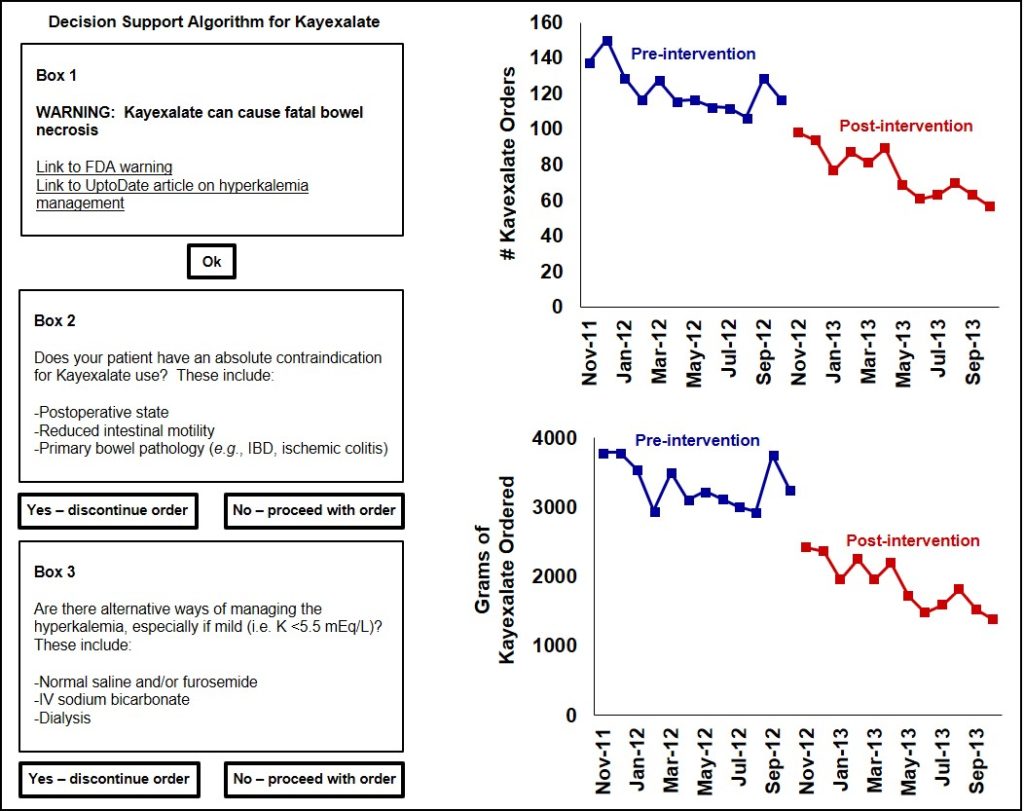

Using an evidence-based approach, we assessed patient safety and resource utilization in a variety of clinical settings. We established that patients assigned to low- versus high-visible rooms in the intensive care unit have increased hospital mortality. We demonstrated the effectiveness of an electronic alert system that we implemented to decrease the inappropriate ordering of sodium polystyrene sulfonate (Kayexalate) for mild hyperkalemia. Additionally, we examined the utility of serologic and radiographic diagnostic testing in the initial evaluation of acute and chronic kidney diseases, using an evidence-based approach.

SELECTED PAPERS FROM OUR RESEARCH
Leaf DE, Cheng XS, Sanders JL, Mendu M, Schiff GD, Mount DB, Bazari H. An electronic alert to decrease Kayexalate ordering. Ren Fail. 38(10):1752-4, 2016. PubMed
Leaf DE, Srivastava A, Zeng X, McMahon GM, Croy HE, Mendu ML, Kachalia A, Waikar SS. Excessive diagnostic testing in acute kidney injury. BMC Nephrol. 17:9, 2016. PubMed
Mendu ML, Lundquist A, Aizer AA, Leaf DE, Robinson E, Steele DJ, Waikar SS. The usefulness of diagnostic testing in the initial evaluation of chronic kidney disease. JAMA Intern Med. 175(5):853-6, 2015. PubMed
Gershengorn HB, Wunsch H, Wahab R, Leaf DE, Brodie D, Li G, Factor P. Impact of nonphysician staffing on outcomes in a medical ICU. Chest 2011;139(6):1347-53. PubMed
Leaf DE, Homel P, Factor PH. Relationship between ICU design and mortality. Chest. 137(5):1022-7, 2010. PubMed
